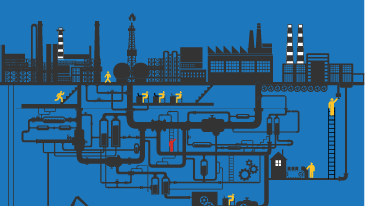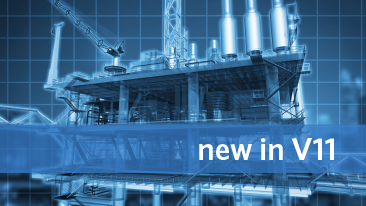Digital transformation is a trending topic all over the world, with leaders across industries presenting their different strategies and visions of what to do or how to achieve it.
However, not everyone is at the same stage of the digital journey, and not everyone will move at the same pace during that journey. The important point is that it’s critical to start the journey and begin embracing digitalization, because those that don’t risk falling behind and becoming obsolete in a business environment that is quickly evolving.
One example of that evolution is the way engineering practices have changed. For many years, the different engineering disciplines worked alone, focusing only on their specific fields. And that worked! But recently, the dynamics of the market have forced process engineers to look at the “bigger picture,” to achieve optimization of their processes by integrating different engineering disciplines and improving collaboration.
Across the globe, we have identified millions of dollars in lost opportunities that can be attributed to a lack of collaboration. Better workflows that enable better communication and sharing of information between process engineers, project engineers, estimators, safety and energy specialists deliver the potential to capture those opportunities. AspenTech’s Performance Engineering suite evolved a few years ago to create features such as Activated Economics, Activated Energy Analysis and Activated Exchanger Design and Rating within the process simulators Aspen Plus® and Aspen HYSYS®, all of which facilitate this collaboration.
But the digital journey goes beyond collaboration within engineering. True digital transformation requires a comprehensive, holistic approach that looks at the entire asset lifecycle: design, operation and maintenance.
As an example, one of the earliest collaborations we saw in Latin America was in refining, where process engineers provided feedback to planners so they could ensure operations complied with the production plan. In this case, engineering models provided information for new conditions or new feedstocks when the planning model didn’t have enough information.
So the engineering simulations contributed to updating the planning model, keeping it accurate to operations and producing a plan that reflected the reality. AspenTech incorporated this as a standard solution component called Planning Model Update.
The Dawn of the “Plant Digital Twin”
As the next step in the evolution, we are now seeing how process engineering simulations can be connected to plant data, creating one type of “digital twin.” These plant digital twin models are exact representations of the operations, and they take advantage of seamless workflows to employ plant data to calibrate the digital twin autonomously and continuously.
With this capability, we can have models that replicate the asset, representing the actual efficiency of towers and compressors, or fouling in heat exchangers, or catalyst deactivation in a refining reactor — just to name a few applications. And beyond that, these models can be used to make better operational decisions.
For example, the simulation models can be calibrated to actual operations and then connected automatically to update the planning model. Or you could have key KPIs that cannot be measured being predicted and calculated by the model, and then reported on a web-based visualization tool such as Aspen Enterprise Insights™ or aspenONE Process Explorer™.
Models can also be connected to plant data to examine what-if scenarios and so-called “look forward” predictions, such as pig travel on a pipeline to review the current liquid holdup on a dynamic model. You could generate cleaning sequences for heat exchangers to determine the economically best moment to clean them. You could even use these models to create high-fidelity models to help train operators through an operation training simulator (OTS) platform for better worker and process safety and efficiency.
These are just a few examples of what we are seeing across the world as our customers progress on their digitalization journeys! Feel free to reach out to me via email if you’d like to learn more about implementing digital twin models





Leave A Comment